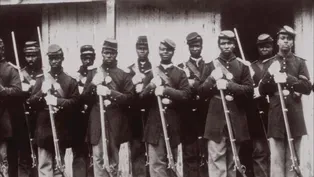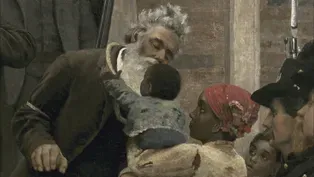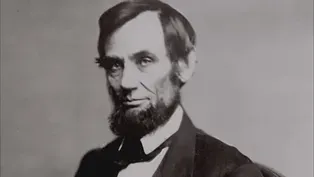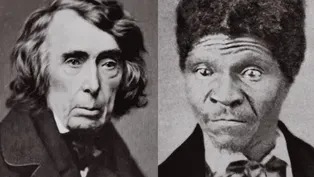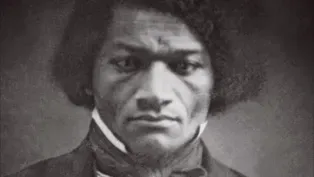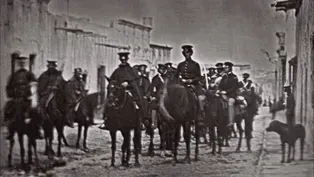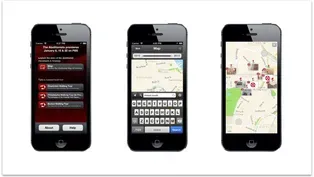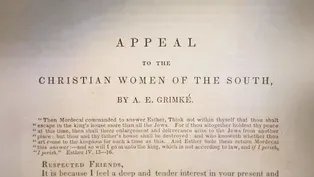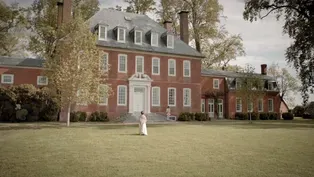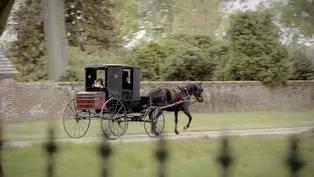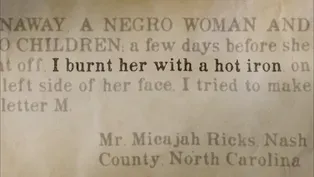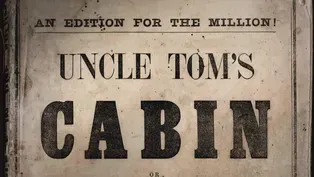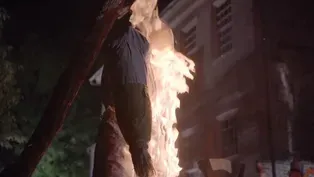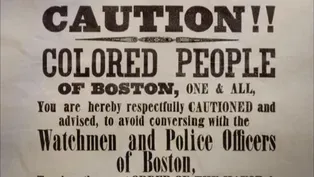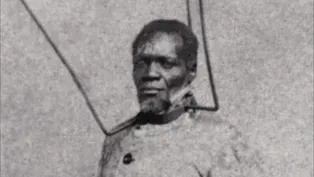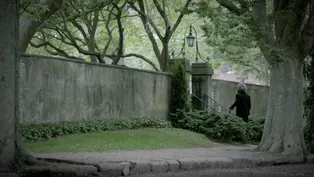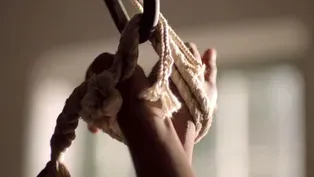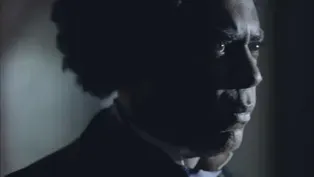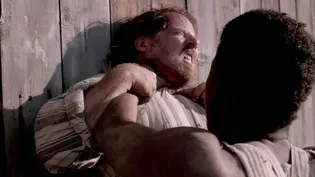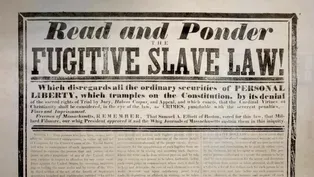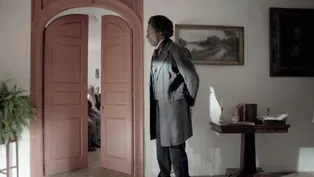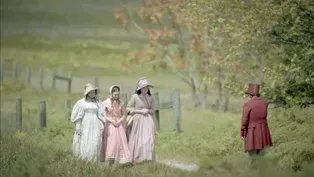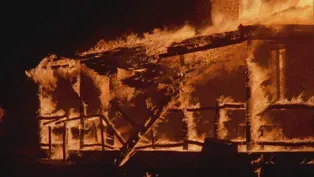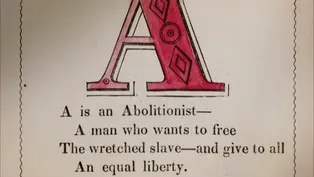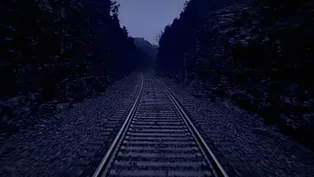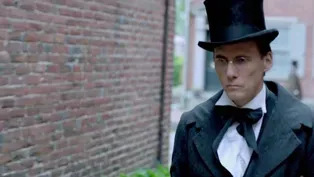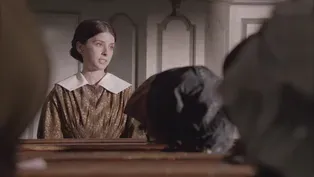
William Lloyd Garrison, Pacifism, and Abolitionism
Clip: Season 25 Episode 12 | 1m 7sVideo has Closed Captions
By 1859, the conflict between North and South challenged Garrison's "peace man" status.
By 1859, the conflict between North and South challenged Garrison's "peace man" status.
Corporate sponsorship for American Experience is provided by Liberty Mutual Insurance and Carlisle Companies. Major funding by the Alfred P. Sloan Foundation.

William Lloyd Garrison, Pacifism, and Abolitionism
Clip: Season 25 Episode 12 | 1m 7sVideo has Closed Captions
By 1859, the conflict between North and South challenged Garrison's "peace man" status.
How to Watch American Experience
American Experience is available to stream on pbs.org and the free PBS App, available on iPhone, Apple TV, Android TV, Android smartphones, Amazon Fire TV, Amazon Fire Tablet, Roku, Samsung Smart TV, and Vizio.
Buy Now

When is a photo an act of resistance?
For families that just decades earlier were torn apart by chattel slavery, being photographed together was proof of their resilience.Providing Support for PBS.org
Learn Moreabout PBS online sponsorshipThe Emancipation Proclamation and the Civil War
Video has Closed Captions
Abolitionist support for the Union Army grew thanks to the Emancipation Proclamation. (1m 39s)
John Brown Puts His Accusers on Trial
Video has Closed Captions
The raid on Harpers Ferry failed, but Brown successfully brought attention his cause. (2m 21s)
Lincoln's Uncertain Commitment to Emancipation
Video has Closed Captions
Would President Lincoln sign the Emancipation Proclamation? Abolitionists were unsure. (1m 46s)
What Was the Dred Scott Decision?
Video has Closed Captions
In 1857 the Supreme Court ruled against Dred Scott, a slave who sought freedom. (2m)
Frederick Douglass Writes His Autobiography
Video has Closed Captions
In his 1845 book, Douglass told the truth about his life as a slave, despite the risk. (1m 49s)
Slavery and the Mexican-American War
Video has Closed Captions
The Mexican-American war (1846-1848) changed the slavery debate. (1m 10s)
Download the American Experience: Mapping History iPhone app, featuring The Abolitionists. (1m 55s)
Premiering January 8 2013. Turning a fringe movement into a force that changed the nation. (30s)
After reading reports of pro-slavery violence, Angelina Grimke began to speak out publicly (2m 59s)
Despite living in luxury, Angelina Grimke believed slavery was a sin of God. (2m 59s)
In 1829, Angelina Grimke left Charleston for an uncertain future in the North. (1m 37s)
Bearing Witness: American Slavery As It Is
Video has Closed Captions
Theodore Weld, Angelina Grimke, and Sarah Grimke's 1839 book documented slavery's horrors. (1m 12s)
Video has Closed Captions
Uncle Tom's Cabin was published in 1852 and changed American opinions on slavery. (2m 4s)
Burning Abolitionist Literature
The Anti-Slavery Society's great postal campaign of 1835 triggered a wave of repression. (1m 58s)
Defying the Fugitive Slave Law
Video has Closed Captions
The 1850 Fugitive Slave Law imposed the rule of Slave states onto Free states. (1m 48s)
Video has Closed Captions
What was the economic value of slavery to 19th century American life? (1m 46s)
Frederick Douglass offers a eulogy to the abolitionist movement at Garrison's funeral. (2m 47s)
Frederick Douglass Begins to Understand Slavery
Frederick Douglass had just begun his life as a slave when he watched his aunt get beaten (2m 10s)
Frederick Douglass, Pacifism, and Abolitionism
Video has Closed Captions
Douglass questions the pacifism of white abolitionists such as William Lloyd Garrison. (1m 34s)
In 1833, Frederick Douglass was sent to a slave breaker to be beaten back into submission. (2m 59s)
The Fugitive Slave Law of 1850 made the hunting down of escaped slaves full legal. (2m 19s)
William Lloyd Garrison speaks to a crowd in Nantucket and introduces Frederick Douglass. (2m 16s)
Garrison Publishes "The Liberator"
William Lloyd Garrison published the first issue of "The Liberator" on January 1, 1831. (2m 21s)
Harriet Beecher Stowe Visits a Slave State
On a trip to Kentucky in 1833, Harriet Beecher witnessed slavery up close. (2m 21s)
A Radical Wedding and a Violent Response
Video has Closed Captions
Abolitionists Theodore Weld and Angelina Grimke wed in a "scandalous" 1838 ceremony. (2m 59s)
Violence Against Abolitionists
Video has Closed Captions
Abolitionists were surprised by the vehement reactions to their 1835 postal campaign. (1m 20s)
A Viral Campaign against Slavery
Video has Closed Captions
In 1835, William Lloyd Garrison and Lewis Tappan proposed an anti-slavery campaign. (1m 40s)
A "transformative moment in history that stems from actions of ordinary individuals." (2m 59s)
William Lloyd Garrison arrives in Boston
William Lloyd Garrison moved to Boston at 22. Abolishing slavery is his main cause. (2m 7s)
Women's Voices in the Abolitionist Movement
Video has Closed Captions
The Grimke sisters, Angelina and Sarah, lectured against slavery throughout the 1830s. (1m 19s)
Providing Support for PBS.org
Learn Moreabout PBS online sponsorshipCorporate sponsorship for American Experience is provided by Liberty Mutual Insurance and Carlisle Companies. Major funding by the Alfred P. Sloan Foundation.


